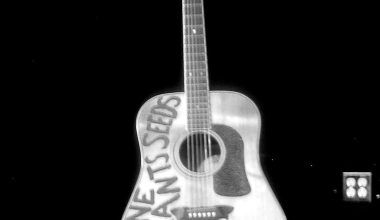Grime music is more than just a genre; it’s a cultural movement. Emerging from the streets of East London in the early 2000s, grime music combines elements of UK garage, jungle, dancehall, and hip-hop. Its raw energy and distinct sound quickly resonated with young people, turning it into a defining voice of urban Britain.
Characterized by fast beats, aggressive delivery, and hard-hitting lyrics, grime music stands out for its authenticity. It captures the struggles, aspirations, and daily lives of those who create and listen to it.
This blog explores everything about grime music—from its origins and evolution to its key players and impact on global culture.
The Origins of Grime Music
Grime music was born in the early 2000s in East London. At its core, it was a reaction to the evolving UK garage scene. Artists wanted something faster, darker, and more reflective of their realities.
Influences
- UK Garage: Grime borrowed the basslines and tempos from UK garage.
- Dancehall and Reggae: Influenced by London’s Caribbean communities, grime music incorporates dancehall rhythms.
- Jungle and Drum & Bass: The high-energy beats of these genres inspired grime’s fast-paced style.
- Hip-Hop: Grime adopted the storytelling and lyrical focus of hip-hop.
Key Elements of Grime Music
Grime music has distinct features that set it apart from other genres:
- Beats: Grime tracks typically have a tempo of 140 beats per minute, creating an intense, fast-paced rhythm.
- Lyrics: The lyrics are often sharp, direct, and reflective of urban life. Themes include social issues, personal struggles, and aspirations.
- MC Culture: Grime heavily features MCs (rappers) who deliver their bars with precision and aggression.
- DIY Ethos: Early grime music was produced with minimal resources, emphasizing creativity over polish.
Pioneers of Grime Music
Grime music wouldn’t exist without its trailblazers. These artists laid the foundation for the genre:
Wiley
Often called the “Godfather of Grime,” Wiley played a pivotal role in shaping grime music. His track “Eskimo” is considered one of the first grime songs.
Dizzee Rascal
Dizzee Rascal’s debut album Boy in da Corner brought grime to mainstream attention. Tracks like “I Luv U” showcased grime’s raw energy.
Kano
Known for his storytelling and lyrical skill, Kano’s contributions to grime music include classics like “P’s and Q’s.”
Lethal Bizzle
His track “Pow! (Forward)” became a grime anthem, symbolizing the genre’s rebellious spirit.
The Rise of Grime Music in the 2000s
During the 2000s, grime music transitioned from underground radio stations to mainstream recognition. Key moments include:
- 2003 Mercury Prize: Dizzee Rascal’s Boy in da Corner won the prestigious award, putting grime music in the spotlight.
- Pirate Radio: Stations like Rinse FM and Deja Vu FM became hubs for grime artists to share their work.
- Channel U: This music channel provided a platform for grime music videos, reaching wider audiences.
The rise of grime music reflected the hunger for a genre that represented the youth’s voice.
Grime Music in the Mainstream
By the 2010s, grime music reached new heights. Artists like Skepta and Stormzy brought the genre to global audiences.
Skepta
Skepta’s album Konnichiwa won the 2016 Mercury Prize, solidifying his place as a grime legend. Tracks like “Shutdown” and “That’s Not Me” became international hits.
Stormzy
Stormzy’s Gang Signs & Prayer became the first grime album to reach number one on the UK Albums Chart. His tracks like “Big for Your Boots” and “Blinded by Your Grace” showcase grime’s versatility.
The Culture of Grime Music
Grime music is deeply rooted in UK urban culture. It reflects the experiences of working-class communities, addressing issues like poverty, racism, and inequality.
Fashion
Grime fashion includes tracksuits, sneakers, and caps—an aesthetic that mirrors the streets where it was born.
Language
Grime lyrics often incorporate slang from London’s multicultural communities, creating a unique linguistic identity.
Community
Grime music fosters a sense of belonging. Events like clashes (rap battles) and live shows bring artists and fans together.
Understanding grime music means appreciating the culture that surrounds it.
The Global Influence of Grime Music
Grime music has transcended the UK, influencing artists worldwide. Its raw energy and DIY ethos resonate with creators across genres.
- Collaborations: Grime artists have worked with international stars like Drake and Pharrell Williams.
- Fans Abroad: Grime has a strong following in countries like the US, Japan, and Australia.
- Festival Appearances: Grime artists now headline major festivals like Glastonbury and Coachella.
Challenges Faced by Grime Music
Despite its success, grime music has faced challenges:
- Media Misrepresentation: Early on, grime was unfairly linked to violence.
- Lack of Support: Many grime artists struggled with limited resources and opportunities.
- Competition: Genres like drill and trap have emerged, sometimes overshadowing grime.
The Future of Grime Music
Grime music continues to evolve. Emerging artists like Dave and AJ Tracey are pushing the genre in new directions. Meanwhile, veteran artists remain influential, ensuring grime stays true to its roots.
Technological Advances
Streaming platforms like Spotify and YouTube have made grime more accessible than ever.
Global Collaborations
Grime artists are working with international talents, creating exciting fusions.
The future of grime music looks bright, with endless possibilities for growth.
Conclusion
Grime music is more than just a genre—it’s a movement that reflects the realities of urban life. From its humble beginnings on pirate radio to its global success, grime has stayed true to its roots.
Its raw energy, powerful lyrics, and cultural significance make grime music a unique and enduring force. Whether you’re a long-time fan or new to the genre, grime offers a world of creativity and authenticity worth exploring.
Related Articles:
For further reading, explore these related articles:
- Small Home Music Studio Setup: The Ultimate Beginner’s Guide
- Top Music World: A Deep Dive into Global Hits and Trends
For additional resources on music marketing and distribution, visit Deliver My Tune.






